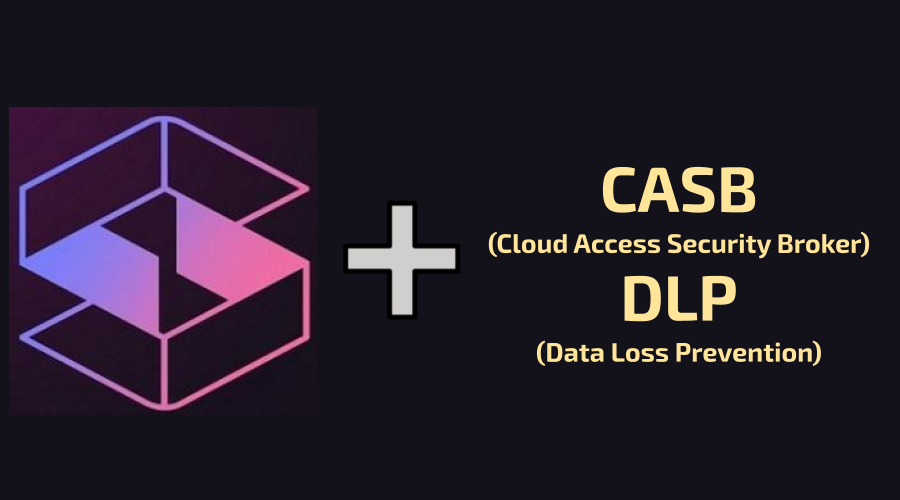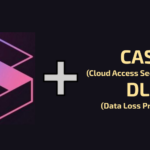In the evolving landscape of cybersecurity, organizations are constantly seeking solutions to protect their data and maintain compliance with regulatory requirements. Two critical components in the cybersecurity toolkit are Cloud Access Security Brokers (CASB) and Data Loss Prevention (DLP) tools. In this article, we dig deeper into the nuances of both, highlighting their differences, and discussing when and how to use them effectively.
CASB: Cloud Access Security Brokers
Overview
CASB solutions act as a protective layer between cloud service users and cloud applications. They help organizations extend the security policies of their on-premises infrastructure to the cloud, offering visibility, compliance, data security, and threat protection.
Advantages
- Visibility and Control: CASBs provide comprehensive visibility into cloud application use, helping organizations to monitor and control cloud services effectively.
- Compliance Management: CASBs assist in maintaining compliance with various regulatory requirements by enforcing security policies across cloud services.
- Threat Protection: CASBs offer advanced threat protection features, helping to identify and mitigate potential threats in the cloud environment.
Disadvantages
- Complexity: Implementing a CASB solution can be complex, requiring integration with existing IT infrastructure and alignment with organizational policies.
- Cost: CASBs are often premium solutions, which might be a barrier for smaller organizations with limited budgets.
DLP: Data Loss Prevention
Overview
DLP tools focus on monitoring and controlling data transfer within the organization. They help in identifying and preventing potential data breach/transmission by monitoring, detecting, and blocking sensitive data while in-use (endpoint actions), in-motion (network traffic), and at-rest (data storage).
Advantages
- Protection of Sensitive Data: DLP tools are vital in safeguarding sensitive data from unauthorized access and leaks, helping to maintain compliance with data protection regulations.
- Monitoring and Reporting: DLP solutions offer robust monitoring and reporting features, providing insights into data usage patterns and potential vulnerabilities.
- Flexible Policy Implementation: DLP tools allow for the implementation of flexible policies that can be tailored to the specific needs of the organization, offering granular control over data transfer.
Disadvantages
- Potential for False Positives: DLP tools can sometimes generate false positives, which might require additional resources to investigate and manage.
- Limited to Data Security: DLP solutions are primarily focused on data security and might not offer comprehensive protection against other types of threats targeting the cloud environment.
When to Use
- CASB: Ideal for organizations using cloud services extensively, looking to extend their security perimeter to the cloud. It is particularly beneficial when there is a need for visibility and control over cloud applications and data.
- DLP: Best suited for organizations with stringent data protection requirements. It is essential when the focus is on preventing data leaks and ensuring the secure handling of sensitive information.
Recommendations
In light of understanding the functionalities and utilities of both CASB and DLP solutions, it is prudent to consider some of the industry leaders in these domains. Here, we recommend three top players for each category based on their robust features and industry reputation:
CASB Solutions
- Netskope Security Cloud
- Highlights: Offers AI-based threat protection and UEBA, providing a strong defense mechanism against various cyber threats.
- Recommended for: Organizations looking for a comprehensive cloud security solution with a focus on real-time data and threat protection.
- McAfee MVISION Cloud (Skyhigh)
- Highlights: Known for its comprehensive visibility into cloud usage and robust DLP capabilities.
- Recommended for: Enterprises seeking a solution with strong compliance management features and advanced threat protection capabilities.
- Cisco CloudLock
- Highlights: Integrates seamlessly with the Cisco ecosystem and offers a user-friendly interface, making the management of cloud security policies simpler.
- Recommended for: Organizations already using Cisco’s security products and looking for a cohesive and unified security ecosystem.
DLP Solutions
- Symantec DLP
- Highlights: Offers robust monitoring and reporting features, providing insights into data usage patterns and potential vulnerabilities.
- Recommended for: Organizations with a primary focus on preventing data leaks and ensuring the secure handling of sensitive information.
- Digital Guardian
- Highlights: Known for its flexible policy implementation and granular control over data transfer, offering a data-centric approach to DLP.
- Recommended for: Enterprises seeking a solution that offers both data visibility and control, without hampering productivity.
- Forcepoint DLP
- Highlights: Provides comprehensive coverage across network, endpoint, and data discovery vectors, with a focus on behavioral analytics.
- Recommended for: Organizations looking for a DLP solution that integrates seamlessly with existing security infrastructure and offers behavioral analytics to identify risky user activities.
Conclusion
While both CASB and DLP play pivotal roles in organizational cybersecurity, they serve different purposes. A CASB provides a broader range of security features focusing on cloud services, whereas DLP is more concentrated on protecting data irrespective of where it resides. In many cases, organizations might find that a combination of both solutions offers the most comprehensive protection, with CASB managing cloud security and DLP focusing on data protection across the board.
Choosing between CASB and DLP, or deciding to implement both, should be a strategic decision based on the organization’s specific needs, the nature of the data it handles, and the regulatory landscape it operates in. By understanding the strengths and limitations of each solution, organizations can create a robust cybersecurity strategy that safeguards their data and assets in an increasingly complex digital landscape.



